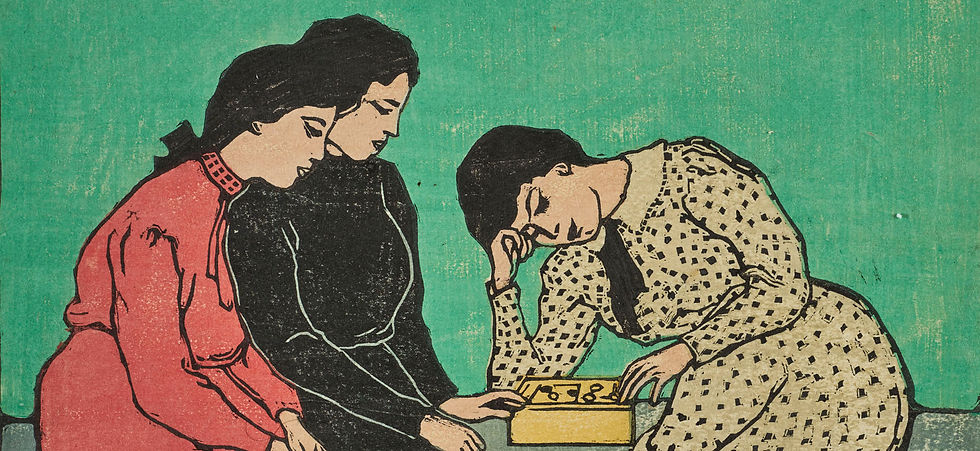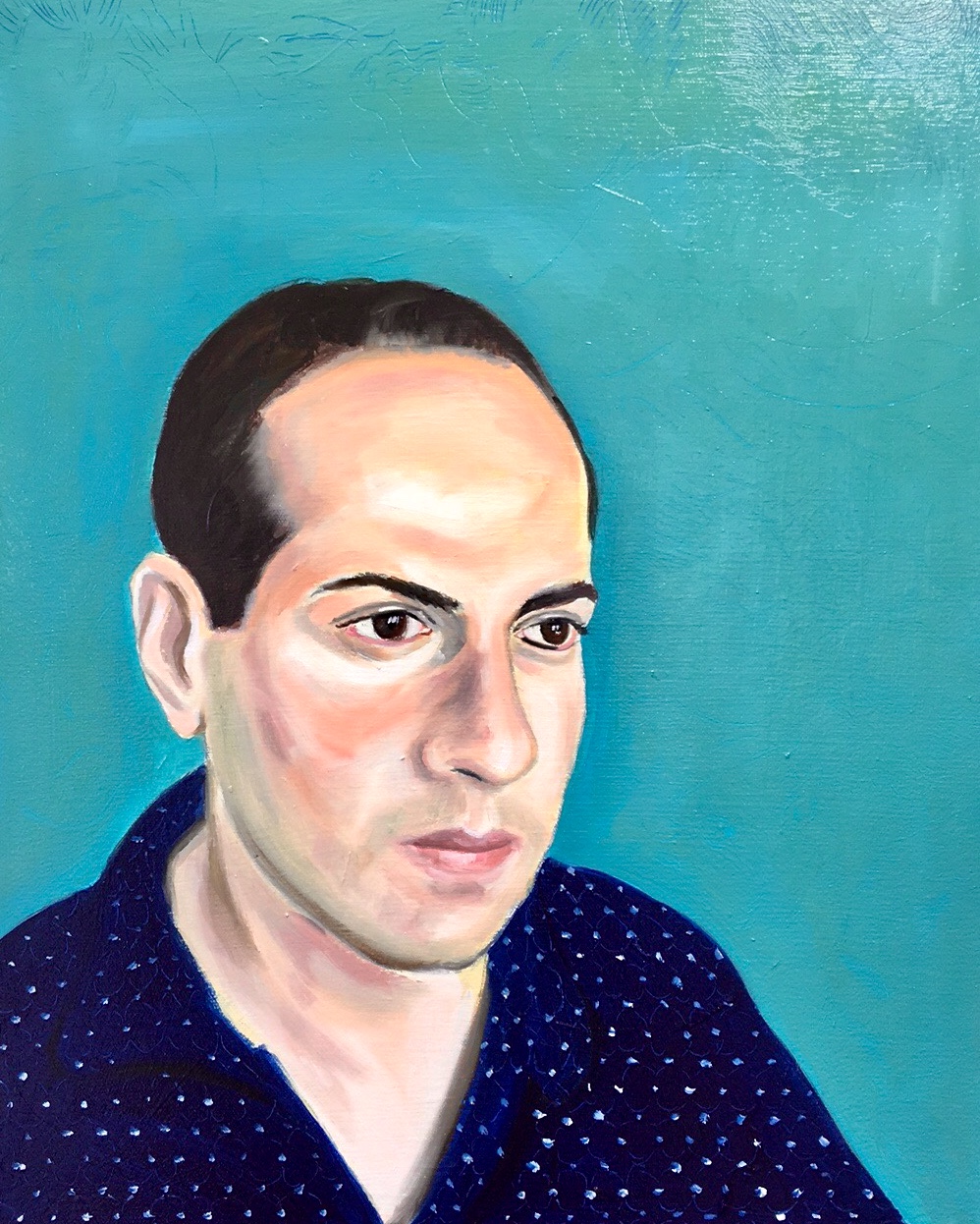The Foreigners Making 'Japanese' Art
- Edward Luper
- Nov 17, 2022
- 4 min read

As an artist working with strong Japanese influences, I sometimes get asked about my justification for this cultural 'appropriation'. Western artists have long admired and loved and been inspired by Japanese art, and some have even been prime movers in the making of new types of 'Japanese' art. In this blog post, I want to discuss Western artists who not only took Japanese influences, but actively contributed to Japanese art too.

The influence of Japanese art in the West, particularly among the Parisian avant-garde in the 19th/early 20th century is well known. The craze for all things Japan - known as Japonisme - can be seen in the works of Monet, Degas, Van Gogh (look at his backgrounds with Japanese prints) etc.

However, my recent trip to Vienna showed me something different. Few people might have heard of Fritz Capelari (1884-1960), the Austrian artist who worked with Watanabe Shozaburo to kick-start the 'shin hanga' or 'new woodblock' movement. Or Emil Orlik (1870-1932) from Prague, who went to Japan in 1900 to study woodblock printing. These artists didn't just appropriate woodblock prints for their Western oil paintings, they studied them seriously and worked within that Japanese tradition producing serious works of art that had a profound influence - particularly on 'shin-hanga'. Since then, many foreigners produced 'Japanese' prints, including Charles Bartlett, Helen Hyde, Paul Jacoulet, Elizabeth Keith, Bertha Lum, and Lillian Miller, right up to Paul Binnie of our time.

Fritz Capelari was born in the town of Bleiburg in 1884. After enrolling in trade school, he discovered his talent for art and stayed an additional year to study graphics before transferring to the Academy of Painting in 1906. Upon graduating, Capelari received the prestigious Griepenkerl award for his academic and artistic merits and was subsequently hired by the British insurance company Lloyds of London. From 1911 to 1915, he travelled extensively throughout Shanghai, Java, and Japan, painting commercially. During a visit to Tokyo in the spring of 1915, Capelari held an exhibition of his prints and met publisher Watanabe Shozaburo, who admired his work. After a brief period working with artist Takahashi Shotei, Watanabe desired an artist who could depict Japanese scenery in a uniquely Western style. He felt Capelari was the man for the job.

Beginning with a single print, Returning Home in the Rain, the two men collaborated to produce twelve shin hanga prints throughout the remainder of the year. Significantly, Fritz Capelari was the first Westerner to work with Watanabe Shozaburo and became the first shin hanga artist. Watanabe produced two other prints for Capelari, Fuji from a Desolate Field in 1918 and Pines, Yotsuya Mitsuke, in 1920. However, Capelari's style was more Westernized than Watanabe had envisioned, thereby ending their professional relationship. Capelari left Japan in 1922 and spent the following decade traveling throughout Europe before returning once again to Asia in 1932.

Capelari was not the first Western artist to come to Japan and work in the medium of Japanese style woodblock prints. Even earlier, in 1900, Emil Orlik had travelled to Japan. He was born in Prague in 1870, when it was still a province of the Austro-Hungarian Empire. The son of a highly assimilated Jewish family, he was baptised in his youth. As a student he moved to Germany in 1889 in order to enroll at the Academy of Fine Art in Munich, although he wasn't admitted until 1891. He was a prolific artist; in addition to his paintings and etchings, Orlik produced magazine and book illustrations, poster, stage and costume designs.
In 1896 he began to develop his own style of colour woodblock prints. Together with a friend from the academy, Orlik made use of an article which had been recently published in English, Japanese Wood-Cutting and Wood-Cut Printing (Smithsonian, 1892), which was written by T. Tokuno, the head of the Japanese Bureau of Engraving and Printing. In 1898, Orlik went on a tour of Europe, including England, Scotland, Belgium, Holland, and his first visit to Paris, where he became more keenly aware of the French interpretation of Japanese art: Japonisme.

This inspired Orlik to pursue the source: in March 1900 he travelled to Japan with the specific intention of learning as much as possible about Japanese woodblock printmaking. He was a determined student; he studied the language in advance, and within a few months he was conversant enough to explore Tokyo and the countryside on his own. While in Japan, Orlik met the young American artist Helen Hyde, who sought his help and advice on carving and printing. He stayed in Japan until November 1901, producing woodblock prints as well as lithographs and etchings, some of which were completed upon his return to Europe.

Charles Bartlett (1860-1940) was a British artist who in 1913, with financial backing from his wife's well-to-do family, travelled to India, Ceylon, Indonesia, China, and Japan. He arrived in Japan in 1915, where he met woodblock print publisher Watanabe Shozaburo. In 1916 Watanabe published 21 woodblocks from Bartlett's designs, including six prints of Japanese landscapes. In 1917, Bartlett and his second wife left Japan for England; however, they stopped off in Hawaii, where they remained—never returning to England. He did visit Japan in 1919, where he created sixteen more shin-hanga prints for Watanabe.
The list of foreign artists working in Japan goes on, too many to include in this blog post, which was meant only to shine a light briefly on this largely unknown group of artists. The point, however, is that foreigners have not only been inspired and taken from Japanese art, but actively contributed to it as well. Something that continues to this day.






Comments